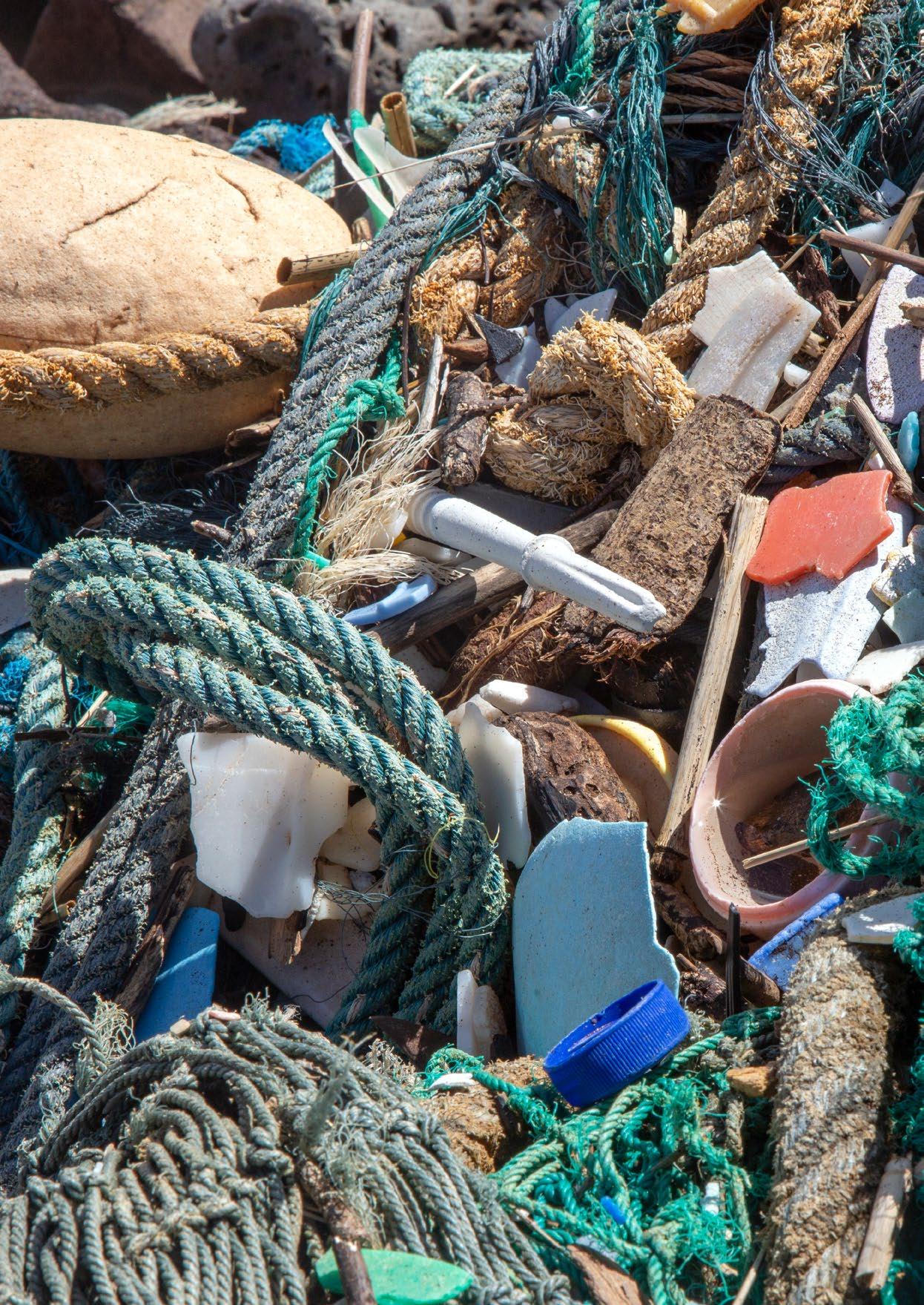CURRENT REGULATIONS There are a wide variety of policies, regulations and recommen dations addressing abandoned, lost and discarded fishing gear at national, regional and international levels. These are often scattered throughout different geographies, conventions and measures, and in some cases are only voluntary. In combination, these existing regulations are either insufficient or there are major gaps in their implementation and enforce ment,66 and are failing to deal with the scale and impacts of ghost fishing and marine debris from fisheries.
UN General Assembly and Sustainable Development Goals Target 14.1 of the UN’s Sustainable Development Goals requires that countries “by 2025, prevent and significantly reduce marine pollution of all kinds, in particular from land-based activities, including marine debris and nutrient pollution.” 67 The UN General Assembly (UNGA) has also adopted several more specific resolutions on abandoned, lost and discarded fishing gear, in particular UN Resolution 60/31 (2005). The 2018 UNGA Sustainable Fisheries Resolution calls on States and RFMOs, once again, to adopt effective management measures to address the issue of lost or abandoned fishing gear and related marine debris.68, 69
© Noel Guevara/Greenpeace
Due to the many different characteristics of fisheries, fishing gears and the ecosystems they operate within, specific regulation at both local and regional level is part of the solution to abandoned, lost and discarded fishing gear and its impacts. This requires ecosystem-based, precautionary fisheries mana gement with stringent requirements for banning, restricting or zoning problematic gear types, in conjunction with the protection of vulnerable ecosystems and important areas for wildlife and fish populations.
International agreements and recommendations
Plastic Waste in Verde Island, Philippines: A crab was trapped inside a discarded cup in Verde Island Passage, the epicenter of global marine biodiversity, in Batangas City, the Philippines.
Current regulations
13




